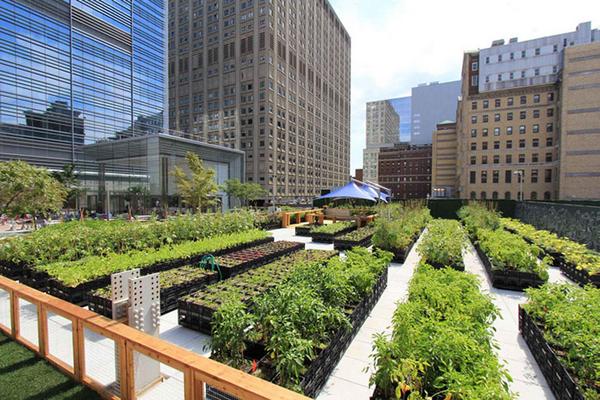Excitement About City Blooming
Excitement About City Blooming
Blog Article
The Definitive Guide for City Blooming
Table of ContentsWhat Does City Blooming Do?City Blooming for BeginnersThe Definitive Guide to City BloomingThe Greatest Guide To City BloomingThe Basic Principles Of City Blooming
Interested in expanding food available in the City of Chicago? Thinking concerning beginning an area yard? Modifications to the Chicago Zoning Ordinance permit farming usages like area yards and urban ranches in numerous parts of the city. Below is a checklist of frequently asked inquiries relating to the guidelines and regulations that cultivators should take into consideration when preparing an urban agriculture job.
The zoning amendment does not change any type of other codes taking care of composting, structure authorizations, acquiring or renting City possessed property, organization licenses or ecological contamination. There are existing codes that control these problems and they remain in full effect and may apply to your task. Area yards are normally had or managed by public entities, public companies or community-based organizations and kept by volunteers.
Urban ranches grow food that is planned to be marketed, either on a nonprofit or for-profit basis. Due to their industrial function, urban farms require a service permit.
All About City Blooming
Composting is allowed but only for plant material that is generated and made use of on site. The quantity of compost product can not go beyond 25 cubic lawns at any type of offered time according to the standards in 7-28-715 of the City's Municipal Code. Yes. Due to the fact that the dirt at most new yard websites needs amending, compost, soil, wood chips, or other products can be obtained to build or boost the expanding room - container and raised bed gardening etc..

If a structure license is required then the hoophouse will be thought about an accessory building. You can discover more regarding the structure license requirements by calling the Department of Structures. The 25,000-square-foot dimension limitation is planned to avoid a solitary neighborhood yard from controling a provided block or interfering with the block's existing property or commercial character.
The restriction does not use to gardens situated in Public Open Area (POS) districts. Can there be more than one neighborhood yard that is 25,000 square feet on a single block? Fencing is not required, however, gardens that have big parking locations may be needed to install fence or various other landscape design attributes.
The Ultimate Guide To City Blooming
B1 & B2 areas call for that all industrial usage activities be performed inside. R districts limit business activity. The policies reflect the objective and intent of the Zoning Code. Is secure fencing needed for metropolitan ranches? Yes. Fencings might be required, in addition to landscaping and testing, for sure parking locations and outdoor work or storage space locations relying on area and the particular activity occurring.
Yes. Urban farms need building permits and zoning authorizations before building. Other types of city review might be needed depending on certain structures, tasks, dimension, landscape design, licensing, public heath read what he said and stormwater management concerns. Many of these needs are recognized in the job style or permitting process, nevertheless, the candidate may be responsible to separately determine certain licenses or permits that may be called for.
Yes. The type of license is identified by what is occurring at the site. The Division of Service Affairs and Consumer Defense can aid determine the details sort of organization certificate that's required. Yes. Off street vehicle parking is required for most commercial tasks in Chicago. The required number of car parking areas is based upon the variety of staff members working on website and not the square video of the expanding space.
An Unbiased View of City Blooming

An urban farm can sell compost product produced on website, nonetheless, the procedure should conform with the regulations in 7-28-715 of the Chicago Municipal Code. Aquaponic systems are enabled inside your home on metropolitan farms in many zoning areas.
Approximately 5 hives or nests of honey bees may be maintained as an accessory usage. Nevertheless, beekeepers have to sign up with the Illinois Division of Farming. For more details concerning the suggested zoning modification you may get in touch with the Department of Real Estate and Economic Growth, Bureau of Preparation and Zoning at 312.744.8563.
Farming in cities and city areas A metropolitan ranch in Chicago. Urban farming refers to numerous practices of cultivating. https://www.topratedlocal.com/city-blooming-reviews, processing, and distributing food in metropolitan areas. The term likewise uses to the location tasks of pet husbandry, aquaculture, beekeeping, and horticulture in an urban context. Urban farming is differentiated from peri-urban farming, which occurs in country locations at the side of suburbs.
City Blooming - Questions
It can involve a motion of natural cultivators, "foodies" and "locavores", that look for to form social media networks based on a common ethos of nature and community holism. These networks can develop by way of formal institutional support, ending up being integrated into neighborhood town preparation as a "shift town" activity for lasting city development.
In either case, the much more direct access to fresh vegetable, fruit, and meat items that might be realised via city agriculture can enhance food protection and food safety while reducing food miles, resulting in lower greenhouse gas discharges, thereby contributing to climate change reduction. Several of the first proof of urban agriculture originates from Mesopotamia.
Report this page